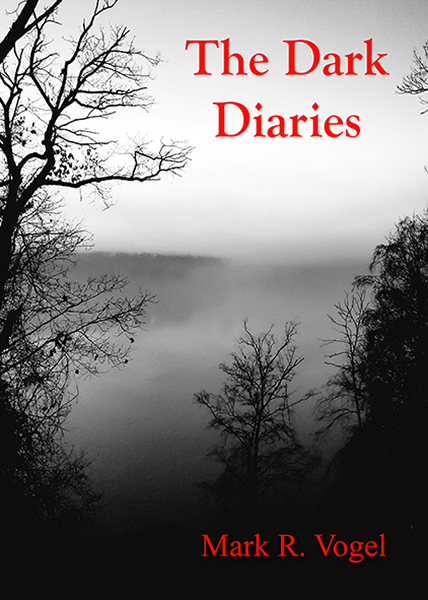Abel Ferrara’s The Driller Killer is an interesting affair in that its popularity and reputation lies largely within its being one of the first “Video Nasties” banned in Europe. However, the irony stands in that The Driller Killer fails to hold even the vaguest light to the gratuitous gore that many of the film’s peers on said blacklist exhibit and, equally fascinating, it posits a thought-provoking premise whose execution is nothing short of genius as it serves as a signpost for an obviously gifted filmmaker who is beginning to hone his skills.
A struggling New York artist, Reno Miller (Abel Ferrara), is living off of his girlfriend, Carol (Carolyn Marz), while attempting to finish his next commissioned painting in order to silence his nagging agent, Dalton Briggs (Harry Schultz). Tortured by the thought of ever present bills; his girlfriend’s live-in lover, Pamela (Baybi Day); and a punk band called The Roosters that perpetually rehearses regardless of the time of day, he finally completes his next piece, one which he believes to be his masterpiece. However, when Briggs refuses to accept the work, Miller snaps as he takes out his aggression by way of an electric drill upon the derelicts roaming the street.
The first aspect of the work which I found most intriguing is that Ferrara, much like his contemporaries Woody Allen and Martin Scorsese, paints his cinematic canvas with wide, unabashed brushstrokes of the New York experience. As much as Allen encompasses the an upper- to middle-class New Yorker mentality, Ferrara shares a stronger kinship with the latter in that he unapologetically issues the underbelly of the Big Apple. In this regard, the work–as does most of the director’s canon–serves as a social critique in that most of what we are given is unpleasant to even look at, nonetheless ponder upon the plights of those whom we are greeted by.
Many have criticized the work as being a throwaway piece of mere exploitation filmed, much like many now renowned directors, for the sake of–albeit it negative–recognition. This often implemented tactic is enacted in order, via the work’s notoriety, to expose those within the business to the filmmaker’s name, thus getting one’s foot in the door as a risqué, but nevertheless sellable, product. Yet, with The Driller Killer, whose name undoubtedly accounts for many of the preconceptions of the film, only houses one instance of explicit onscreen gore. All of the other acts of violence occur with the camera turned away from the victim as we focus upon the filmmaker’s agenda: the character of Reno Miller.
As such, The Driller Killer stands as one of the greatest character studies of insanity within the genre. However, amid the poor photography, violence, and unbalanced compositions, many get lost along the way but, unlike many of the Video Nasties, such is not created due to the filmmaker’s lethargy. For example, The Driller Killer not only posits an impetus for the killer’s homicidal rage, but does so ever-so-subtlety, i.e. the confusing opening sequence, which is never explicitly explained, in which an old man (James O’Hara) offends Miller by touching his hand. However, once Miller begins his rampage, his victims being the homeless bums of the City, we come to realize that the pressures bearing upon the artist are visual, seemingly constant, confirmations upon his fears of becoming a vagabond. Only intuitively do we come to understand that the old man, a derelict himself, is Miller’s father.
What results as a consequence of this defense mechanism made manifest is a succinct explanation of how a passionate person (Miller does not agree with Briggs’s assessment of his work, which the viewer complies with after having watched Miller labor over the piece) who, in the midst of an impassionate world, goes insane at the thought of being unable to aptly express himself artistically, compounded by his inability to subside at the most minimal level, nonetheless rise above his rapidly declining state of squalor.
Laden with pathos, Ferrera convolutes his narrative in that Miller is unable to connect with anyone throughout the film, primarily due to his preoccupation with mere survival. In Francis Bacon’s terms, “Morality is a luxury” at this venue in Miller’s life. We watch as Miller makes out with Carol in the back of a cab before becoming instantaneously ponderous once she opens the cab door, his mind obviously reverting back to his immediate affairs regarding how to make ends meet. The often-referenced ambiguous ending infers that Miller finally makes a connection, however momentary and fleeting it may be, amid the chaos and depravity of his environment and life.
Interestingly, using the character of Briggs as an intertexual mouthpiece as he complains that Miller’s work has become too technical and, as a consequence, is devoid of any reminisce of passion, the cinematography and editing of The Driller Killer turns away many a would-be interested viewer. However, as form follows function, to polish and refine the technical components of a film involving the underbelly of society would, aesthetically, defeat its own purposes as Ferrara permits the mode to compliment the contents contained therein. This is not to say the work is not controlled, but not in the areas in which it needn’t be. For example, an eye motif runs throughout the duration of the feature by way of human eyes filling the camera lens, the dominating stare of a bison contained within Miller’s newest painting, and the blank gaze of a skinned rabbit, whom Miller reluctantly accepts as a gift from his superintendent (Alan Wynroth) just to have another meal. Furthermore, Ferrera pauses to insert ironical humor, thus reminding us that such will inadvertently surface even during the most inappropriate times as Miller is forced to pause from his work in order to drill a hole in a door facing at Pamela’s incessant request (to say nothing of foreshadowing). Also rather fascinating is the punk band, which serves as a Greek chorus outlining the main themes of Miller’s life by way of their lyrics.
Unlike most of the Video Nasties it was placed beside, Abel Ferrara’s The Driller Killer is a substantial piece of cinema that not only signals the presence of a very critical acumen at work, but that reflects the time and locale in which it was filmed as we are greeted with one of the most masterful depictions and explorations of human insanity set to celluloid.
-Egregious Gurnow
- Interview with J.R. Bookwalter - January 22, 2015
- Interview with Andrew J. Rausch - January 22, 2015
- Interview with Rick Popko and Dan West - January 22, 2015
- Interview with Director Stevan Mena (Malevolence) - January 22, 2015
- Interview with Screenwriter Jeffery Reddick (Day of the Dead 2007) - January 22, 2015
- Teleconference interview with Mick Garris (Masters of Horror) - January 22, 2015
- A Day at the Morgue with Corri English (Unrest) - January 22, 2015
- Interview with Writer/Director Nacho Cerda (The Abandoned, Aftermath) - January 22, 2015
- Interview with Actress Thora Birch (Dark Corners, The Hole, American Beauty) - January 22, 2015
- Interview with Actor Jason Behr, Plus Skinwalkers Press Coverage - January 22, 2015


